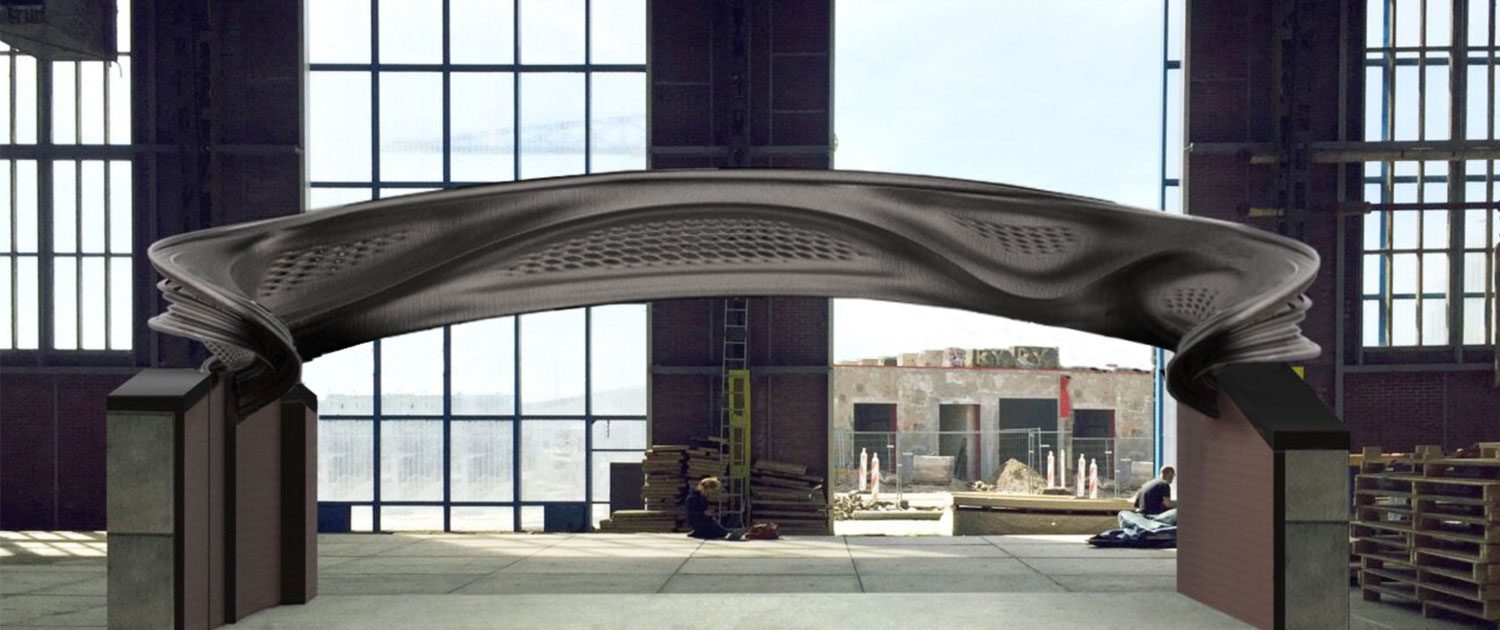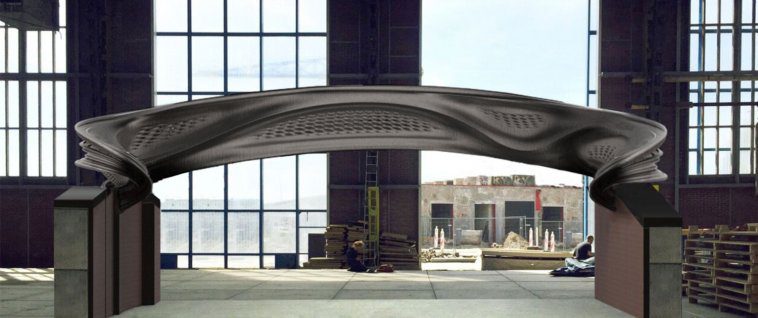MX3D has finally finished building the full span of its long-awaited 3D printed steel bridge! For the next step, the Dutch company is working with the Cambridge Centre for Smart Infrastructure and Construction to install a network of sensors on the bridge.
Back in 2015, right around the time when additive manufacturing hype was at its peak, the Dutch company MX3D announced an ambitious project involving a 3D printed steel bridge. The plan, which entails placing the footbridge over a canal in Amsterdam’s Red Light District, has encountered a few setbacks, but the team is making great progress as of late.
Read more: MX3D’s Long-Awaited 3D Printed Bridge Project Evolves & Progresses On
MX3D has worked with a number of innovative partners to bring this 3D printed bridge to reality, including the Joris Laarman Lab, Autodesk, The Alan Turing Institute, Imperial College London, among others. The 12-meter footbridge will reportedly be the largest metal 3D printed structure in the world. In fact, MX3D recently announced that the full span of the bridge is finally complete.
It has also been revealed that MX3D is collaborating with the Cambridge Centre for Smart Infrastructure and Construction (CSIC) to install a network of sensors onto the bridge. The sensor network will be designed and installed on the bridge by a team of structural engineers, mathematicians, computer scientists, and statisticians. Using this system, MX3D will be able to measure, monitor, and analyze the performance of the 3D printed structure.
Sensor Network Turns 3D Printed Bridge into a “Living Laboratory”
The sensors will collect data and input it into a living computer model of the bridge, which was developed by a group from the Department of Civil and Environmental Engineering at Imperial College London. This digital version will imitate the physical bridge in real-time, which will enable MX3D to analyze and test the performance and behavior of both the physical and digital version.
“The sensors collect data on structural measurements including strain, displacement and vibration and measure environmental factors such as air quality and temperature. This enables engineers to monitor the ‘health’ of the bridge in real time and observe and record how it changes throughout its lifespan. The sensor network provides a ‘nervous system’ for the bridge and creates a living laboratory for the researchers and engineers,” said Dr. Mohammad Elshafie, Co-Investigator with CSIC.
With this sensor network, the team believes that they can obtain valuable insight into how to optimize the design for future 3D printed metallic structures. It will also allow MX3D to refine and modify the design of its 3D printed steel bridge in order to ensure maximum safety for pedestrians.
According to the company’s timeline, MX3D is planning to install the 3D printed bridge across an Amsterdam canal sometime in 2019. The next steps are to conduct load tests, which will verify structural integrity, and use the sensor network to build a digital twin.
You can keep up-to-date with the project by following along on MX3D’s website.

Source: Cambridge Network
Website: LINK


